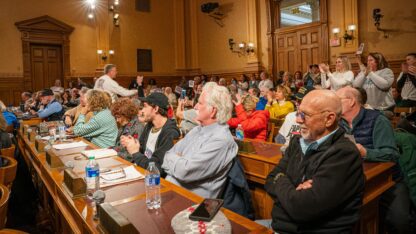No issue will be more important in the upcoming presidential election than President Obama’s handling of the nation’s economy. Critical to that debate is an assessment of the Obama administration’s economic stimulus program. Republicans claim it was a costly failure. Supporters maintain it saved the U.S. from a depression.
ProPublica investigative reporter Michael Grabell’s new book Money Well Spent is an expansive account of the stimulus programs. Grabell scoured federal records and traveled to more than a dozen states across the country for the book, which details how the 2009 “American Recovery and Reinvestment Act” was passed and how the stimulus money was spent. Grabell assesses Republican complaints that the program funded silly projects like a tunnel for turtles in Florida. He describes families thrown into poverty by the recession and looks at whether the plan made a difference in their lives. And he tries to answer some of the big questions — how many jobs the plan saved or created, and whether it was a sound investment of tax dollars.
On Thursday’s Fresh Air, Grabell explains why the stimulus plan became what he calls “one of the most reviled pieces of legislation in recent memory.” Grabell also offers his own assessment of President Obama’s $825 billion stimulus plan, which was designed to jump-start the ailing economy. It remains the largest recovery plan in American history.
“You look at all these major programs in history — the moon race, the Manhattan Project, the WPA [Works Progress Administration] — the stimulus was bigger than all of these things,” he tells Fresh Air‘s Dave Davies. “And so it begs the question: What did we accomplish with all of this money?”
Interview Highlights
On the New Deal Programs being larger than the stimulus, relative to the size of the government at the time
9(MDAxODM0MDY4MDEyMTY4NDA3MzI3YjkzMw004))






